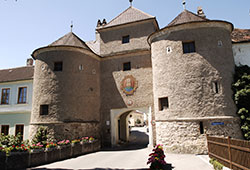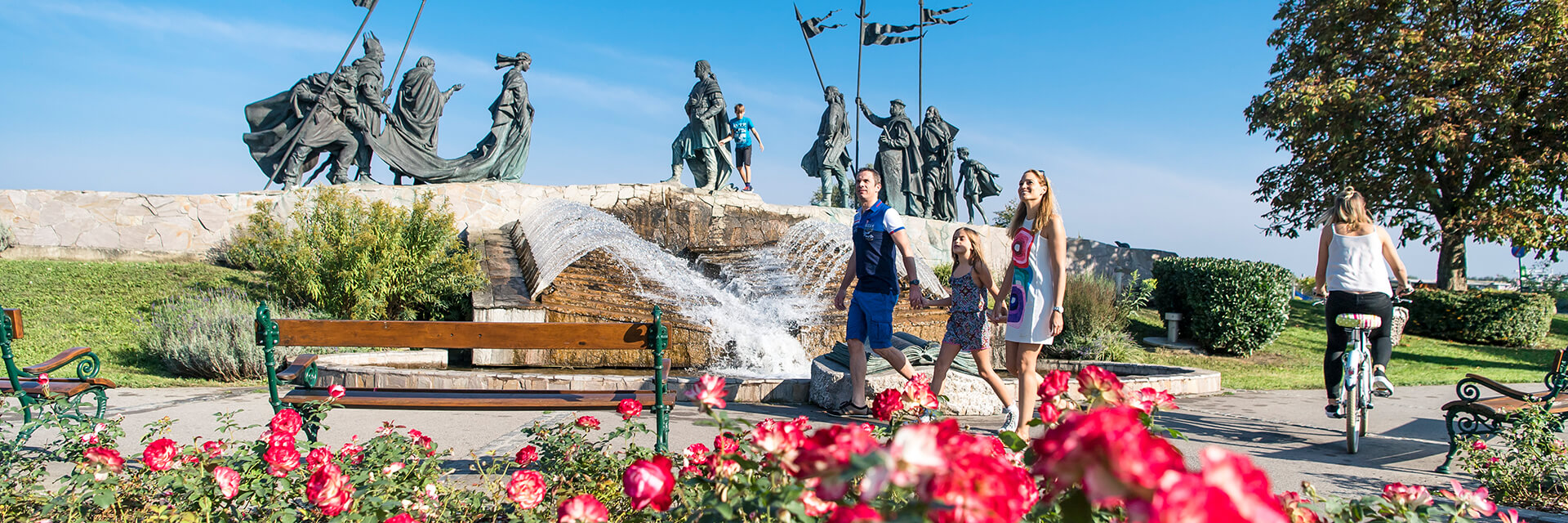Roman traces & historical sites in the region
The land on the Danube has exciting stories to tell.
People have been settling in this fertile land for thousands of years. Burial mounds and artefacts tell of those times. The mysterious earth stables of Großriedenthal, later used as shelters and escape rooms, also point to the long history of settlement.
Roman memories
The land was strategically valuable for the Romans . The Danube formed the natural border, the Limes, to the Germanic "barbarians" in the north. As a result, large Roman camps and
towns were built all along the Danube.
Tulln was the equestrian camp of Comagena 2,000 years ago. The multi-storey Roman tower, also known as the Salt Tower, as well as original finds and pictures, which are on display in the Tulln Roman Museum , are still visible today.
The mighty Roman gate and the Hunger Tower in Traismauer are reminders of the Roman equestrian fort Augustianis. In Zeiselmauer, once Cannabiaca, the Burgus and the remains of a fan tower are also Roman witnesses.
The alchemist of Oberstockstall
In 1980, the inventory of an alchemical-metallurgical laboratory from the middle of the 16th century was discovered by chance in an adjoining room of the chapel at Oberstockstall Castle.
The find is a historical sensation and is considered the world's most important discovery of an alchemist's laboratory.
The alchemist of Oberstockstall must have been a highly versatile metallurgist. Numerous exhibits are on display at the "Altes Rathaus" museum in Kirchberg am Wagram.
Legends & myths
According to legend, the Korneuburg corn markets once attracted countless rats. A flute player proved to be the savior, luring the rodents to the Danube, where they drowned. As the man was refused the promised reward, a year later he directed all the town's children to the river and kidnapped them. Today, the "Pied Piper Fountain" on Rathausplatz commemorates this event.
The Klosterneuburg veil legend has it that a strong gust of wind tore the bridal veil from the head of the wife of the founder of the monastery, Margrave Leopold III Agnes, on her wedding day on Leopoldsberg, which flew away and could not be found. Nine years later, Leopold found the white veil intact and founded Klosterneuburg Abbey on this spot.


